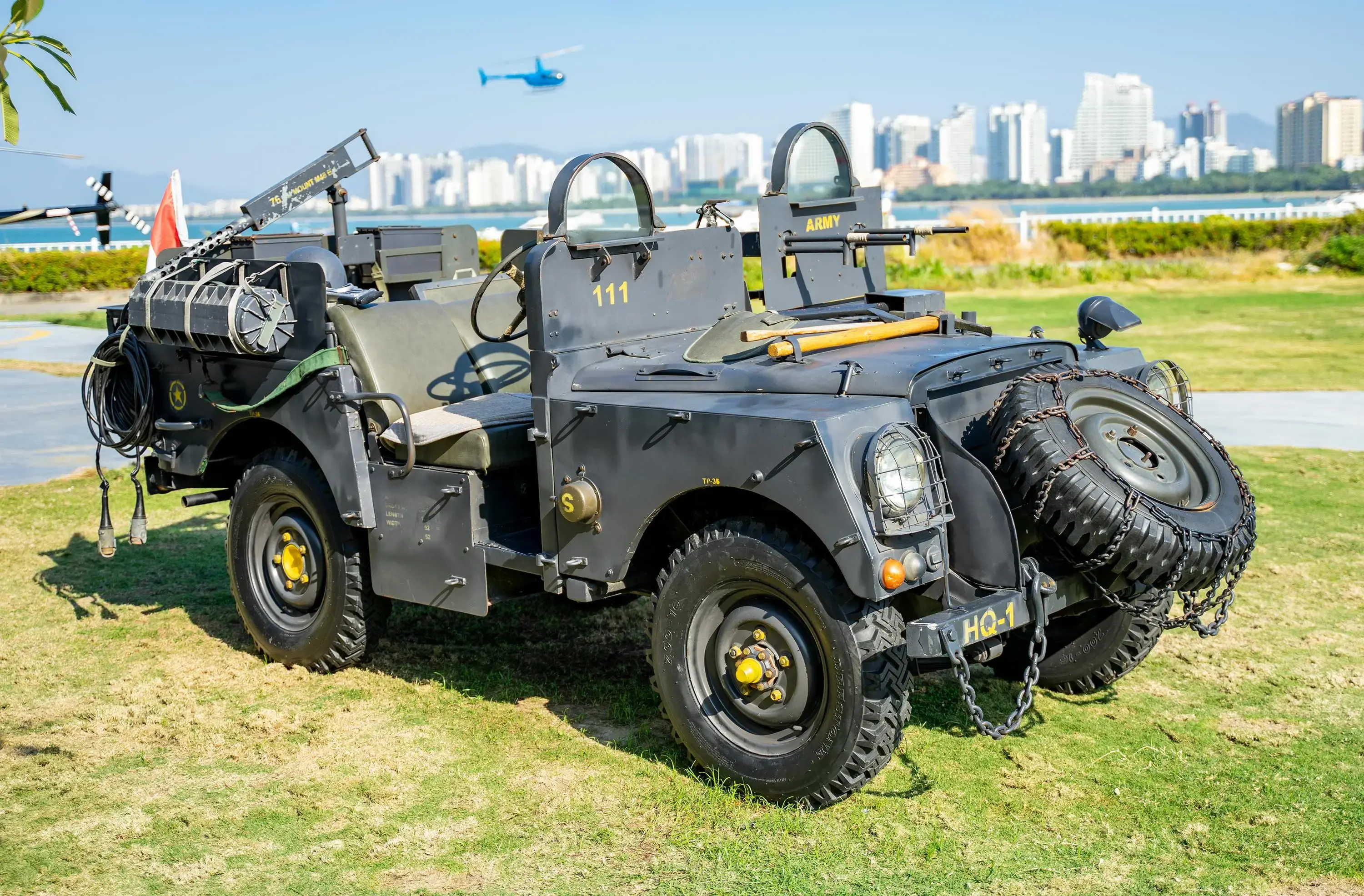Learn from Mistakes: 7 Common Errors in Car Shipping & Ways to Avoid
International car shipping can transform from a straightforward process into a costly nightmare when common mistakes derail your plans. After nearly two decades of helping customers navigate global vehicle transport, West Coast Shipping has witnessed every possible error—from inadequate documentation that triggers customs delays to improper vehicle preparation that results in expensive damage claims. Understanding these pitfalls before they happen isn't just helpful—it's essential for protecting your investment and ensuring smooth delivery.
The difference between a successful shipment and a frustrating experience often comes down to preparation and knowledge. Simple oversights like leaving personal items in your car or failing to research shipping companies properly can cost thousands in fees, delays, and headaches.
Mistake #1: Choosing the Wrong Shipping Method Without Research
The Problem:
Many customers select their shipping method based solely on price, without understanding the differences between container shipping, RoRo (Roll-on/Roll-off), and air freight options. This often leads to inappropriate service levels, unexpected limitations, or inadequate protection for their specific vehicle.
Why This Happens:
-
First-time shippers assume all methods provide similar service levels
-
Price comparison websites don't explain the real differences between options
-
Customers focus on initial quotes without considering total costs and requirements
-
Limited understanding of vehicle-specific needs and destination requirements
How to Avoid This Mistake:
-
Assess Your Vehicle's Needs: Consider value, condition, and special requirements
-
Understand Service Differences: Container offers protection and flexibility, RoRo requires operational vehicles, air freight provides speed at premium cost
-
Compare Total Value, Not Just Price: Factor in protection level, convenience, and peace of mind
-
Match Service to Vehicle: Luxury, classic, or non-running vehicles typically need container protection
Our detailed guide on RoRo versus container shipping explains when each method makes sense for different vehicle types and situations.
Mistake #2: Inadequate Vehicle Preparation and Documentation
The Problem:
Failing to properly prepare your vehicle and gather complete documentation causes delays, additional fees, and potential damage during transport. This includes everything from leaving the car dirty for inspection to missing critical paperwork.
Common Preparation Oversights:
-
Skipping thorough cleaning before pickup
-
Leaving fuel tank too full or completely empty
-
Failing to check and document fluid levels
-
Not removing or securing loose accessories
-
Forgetting to disable alarm systems
-
Missing pre-shipment condition photography
Documentation Gaps:
-
Original title not available or has outstanding liens
-
Missing bill of sale or purchase documentation
-
Power of attorney forms not properly notarized
-
Export/import permits not obtained in advance
-
Previous registration or license documentation incomplete
The Costly Consequences:
Inadequate preparation can result in pickup refusal, port storage fees of $50-150 per day, customs delays, and damage claims that won't be honored due to poor documentation. One customer's BMW faced three weeks of port storage in Hamburg because lien paperwork wasn't properly completed, costing over $2,100 in additional fees.
Prevention Strategies:
-
Complete Pre-Shipping Checklist: Clean thoroughly, check fluids, remove belongings, document condition
-
Gather All Documents Early: Start paperwork process 4-6 weeks before shipping
-
Professional Photography: Take detailed photos from all angles in good lighting
-
Mechanical Verification: Ensure vehicle runs properly and check for leaks
-
Professional Assistance: Work with experienced shippers who guide preparation requirements
Detailed preparation requirements vary by destination—see our international shipping process guide for comprehensive checklists.
Mistake #3: Neglecting Proper Research on Shipping Companies
The Problem:
Choosing a shipping company without thorough research leads to poor service, unexpected costs, and potential vehicle damage. Many customers fall victim to brokers posing as actual carriers or companies with poor track records.
Research Shortcuts That Backfire:
-
Selecting based solely on lowest price quotes
-
Not verifying company licensing and credentials
-
Ignoring customer reviews and industry ratings
-
Failing to understand broker vs. carrier differences
-
Not checking financial stability and track record
Red Flags to Watch For:
-
Quotes significantly below market rates (often bait-and-switch tactics)
-
Requests for large upfront payments before pickup
-
No physical address or inability to visit facilities
-
Poor communication or unprofessional behavior
-
No proper licensing or verification credentials
-
Negative patterns in customer reviews
The High Cost of Poor Choices:
Unreliable companies can disappear with your money, damage your vehicle through improper handling, hold your car hostage for additional payments, or provide no customer service when problems arise. Recovery from these situations often involves legal action and extended delays.
Smart Selection Strategies:
-
Verify Credentials: Check FMCSA registration, DOT numbers, and proper licensing
-
Research Company History: Look for established companies with years of experience
-
Read Authentic Reviews: Check multiple platforms and look for detailed feedback
-
Visit Facilities: Legitimate companies will allow facility tours
-
Understand Service Model: Know whether you're working with a broker or actual carrier
-
Compare Value, Not Just Price: Consider service quality, communication, and reliability
Learn what questions to ask potential shipping companies in our guide on choosing reliable international car shippers.
Mistake #4: Ignoring Coverage and Protection Requirements
The Problem:
Many customers assume their existing auto policies or basic carrier liability covers their vehicle during international shipping. This dangerous assumption leaves them financially exposed when damage, theft, or loss occurs during transport.
Coverage Misconceptions:
-
Believing personal auto policies cover shipping
-
Assuming basic carrier liability provides adequate protection
-
Not understanding coverage exclusions and limitations
-
Failing to declare accurate vehicle values
-
Skipping additional protection for high-value vehicles
Standard Liability Limitations:
Most carriers provide minimal liability coverage under the Carriage of Goods by Sea Act (COGSA), typically capped at just $500 per shipment regardless of vehicle value. This coverage only applies to carrier negligence and excludes many common risks like weather damage, theft, or port handling issues.
The Financial Risk:
Without proper coverage, a minor accident can cost thousands out-of-pocket. For example, if container handling equipment drops your container and causes $15,000 in damage, standard liability would cover only $500, leaving you responsible for $14,500 in repairs.
Protection Best Practices:
-
Assess Vehicle Value Accurately: Use current market values, not purchase prices
-
Understand Coverage Types: Research total loss vs. comprehensive damage protection
-
Read Policy Exclusions: Know what situations aren't covered
-
Consider Comprehensive Marine Coverage: For complete protection during transit
-
Work with Reputable Providers: Choose companies offering adequate coverage options
Our comprehensive analysis of cargo protection considerations explains coverage options and helps you make informed protection decisions.
Mistake #5: Poor Planning and Timeline Management
The Problem:
Inadequate planning and unrealistic timeline expectations cause rushed decisions, higher costs, and shipping delays. Many customers underestimate the time required for proper preparation, documentation, and booking.
Common Timeline Mistakes:
-
Waiting until the last minute to book shipping services
-
Not accounting for peak season demand and longer lead times
-
Underestimating documentation preparation time requirements
-
Failing to plan for customs clearance and delivery coordination
-
Not considering seasonal factors affecting shipping schedules
Peak Season Challenges:
During high-demand periods (typically summer months), shipping capacity becomes limited, prices increase by 25-40%, and booking slots fill weeks in advance. Last-minute bookings often result in suboptimal service options or complete unavailability.
The Rush Cost:
Emergency shipments can cost 50-100% more than planned bookings, while rushed preparation leads to documentation errors and additional fees. One customer needed their Ferrari in Monaco for a car show but waited too long to book, ultimately paying $8,000 for air freight instead of $2,500 for planned container shipping.
Smart Planning Strategies:
-
Book 6-8 Weeks in Advance: Especially during peak seasons
-
Start Documentation Early: Begin paperwork process immediately after deciding to ship
-
Build in Buffer Time: Allow extra time for unexpected delays or requirements
-
Understand Seasonal Patterns: Plan around peak demand periods when possible
-
Coordinate Delivery Timing: Ensure you'll be available for vehicle pickup and delivery
Learn optimal booking strategies in our guide on shipping during peak season.
Mistake #6: Failing to Understand Customs and Regulatory Requirements
The Problem:
Every destination country maintains unique import requirements, customs procedures, and compliance standards. Failure to understand and meet these requirements results in delayed clearance, additional fees, or vehicle rejection at destination ports.
Regulatory Complexity Areas:
-
Import duties and tax calculations varying by country and vehicle type
-
Environmental and safety compliance standards differing by destination
-
Age restrictions and emissions requirements for vehicle imports
-
Documentation translation and authentication requirements
-
Temporary vs. permanent import procedure differences
Common Compliance Failures:
-
Incorrect customs valuation leading to penalty assessments
-
Missing environmental certificates causing port detention
-
Improper age calculation affecting duty rates and eligibility
-
Inadequate documentation translation delaying customs clearance
-
Wrong import procedure selection resulting in unnecessary fees
Real-World Example:
A 1999 Porsche 911 shipped to Germany faced 3-week port detention because the owner didn't obtain required environmental compliance certificates. The delay cost €2,800 in storage fees, and the car required expensive modifications to meet German standards—costs that could have been avoided with proper advance planning.
Compliance Success Strategies:
-
Research Destination Requirements Early: Each country has unique rules and procedures
-
Work with Experienced Professionals: Use customs brokers familiar with vehicle imports
-
Verify Document Requirements: Ensure all paperwork meets destination standards
-
Understand Tax Implications: Calculate total landed costs including duties and fees
-
Plan for Inspections: Allow time for required technical and customs inspections
Specific country requirements vary significantly—see our country-by-country cost breakdown for detailed regulatory information.
Mistake #7: Inadequate Communication and Follow-Up
The Problem:
Poor communication with shipping companies and insufficient follow-up during the transport process leads to missed updates, surprise issues, and problems that could have been prevented with proper coordination.
Communication Breakdowns:
-
Not establishing clear communication protocols and expectations
-
Failing to provide accurate contact information and availability
-
Missing important updates about schedule changes or requirements
-
Not asking questions when uncertain about procedures or requirements
-
Assuming everything is proceeding smoothly without verification
Follow-Up Failures:
-
Not tracking shipment progress or monitoring for delays
-
Missing customs clearance requirements or deadlines
-
Failing to coordinate pickup and delivery logistics
-
Not preparing for vehicle inspection upon arrival
-
Assuming delivery coordination will happen automatically
The Coordination Cost:
Poor communication can result in missed pickup appointments, customs clearance delays, demurrage fees at destination ports, and vehicles sitting unattended when they arrive. One customer's Range Rover sat at Southampton port for 10 days because delivery coordination wasn't properly arranged, costing £850 in storage fees.
Communication Best Practices:
-
Establish Clear Expectations: Define communication frequency and methods upfront
-
Provide Accurate Information: Ensure contact details are current and you're reachable
-
Ask Questions Proactively: Clarify anything you don't understand immediately
-
Track Progress Regularly: Monitor shipment status and address issues quickly
-
Coordinate Logistics Early: Arrange pickup and delivery details well in advance
-
Document Everything: Keep records of all communications and agreements
How West Coast Shipping Helps You Avoid These Mistakes
Comprehensive Consultation Process: Our experienced team guides you through every decision, from shipping method selection to documentation requirements, ensuring you make informed choices based on your specific needs.
Proven Preparation Support: We provide detailed checklists, documentation assistance, and preparation guidance tailored to your destination country's requirements, eliminating guesswork and preventing costly oversights.
Transparent Communication: Regular updates, tracking access, and dedicated account management keep you informed throughout the process, while our experience prevents common coordination issues.
Professional Network: Our relationships with customs brokers, port agents, and delivery services worldwide ensure smooth coordination and help avoid the pitfalls that trap inexperienced shippers.
Quality Protection: Nearly two decades of international shipping experience means we've seen every possible mistake and developed systems to prevent them, protecting your investment and ensuring successful delivery.
Whether you're shipping a daily driver or a million-dollar classic, avoiding these seven common mistakes makes the difference between a smooth experience and a costly disaster. Proper preparation, research, and professional guidance transform international car shipping from a stressful ordeal into a manageable process.
Get Your Expert Shipping Consultation
Ready to ship your vehicle internationally without the common mistakes that cost time and money? Use our comprehensive calculator below to get an instant quote, then connect with our expert team who will guide you through every step of the process, ensuring your car arrives safely and on schedule.
You May Also Like
These Related Stories

Buying Supercars from Salvage Car Auctions: Complete Guide 2025

Top 10 Classic American Cars Netherlands Collectors Love to Import

-093789-edited.png?width=220&height=79&name=wcs_final_logo_(1)-093789-edited.png)
